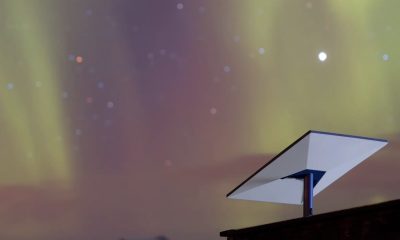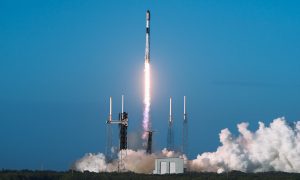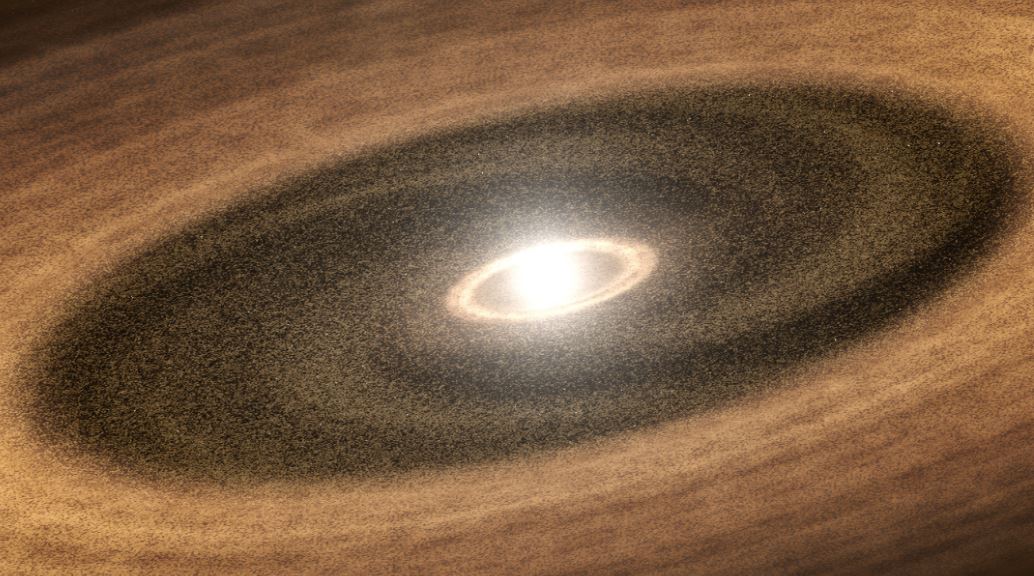

News
NASA lab confirms DNA sugar can be made in space, adding evidence that ‘life’ could be all over the universe
NASA researchers at the Ames’ Astrophysics and Astrochemistry Lab in Mountain View, California have provided the first experimental evidence demonstrating that the sugar in DNA – 2-deoxyribose – can be formed in interstellar space. In their study published on December 18, 2018 in the journal Nature Communications, Michel Nuevo, George Cooper, and Scott Sandford combined organic compounds, water vapor, and light – all elements present in interstellar space – inside a vacuum chamber mimicking the cosmic environment and observed the results. Along with the DNA sugar, a variety of other sugar derivatives were found to have been created. This discovery is more evidence that the chemical building blocks of life could be common all over the universe, seeding other planets as they did Earth in the ancient past.
One of the biggest questions science is constantly pursuing is whether we are alone in the universe, a research endeavor that takes many paths. Astrophysicist Carl Sagan is famously quoted often, saying, “The nitrogen in our DNA, the calcium in our teeth, the iron in our blood, the carbon in our apple pies were made in the interiors of collapsing stars. We are made of star stuff.” It meant that the universe is filled with the building blocks of life, thus the pursuit to find out how those building blocks combine to actually form life is an endeavor with the farthest reaching implications. Scott Sandford, one of the study’s researchers, added to this in reference to his own team’s experiment, saying, “The universe is an organic chemist. It has big beakers and lots of time – and the result is a lot of organic material, some of which is useful to life.”
To make their discovery, the Ames team cooled an aluminum substance to near absolute zero inside a vacuum chamber (since space is a vacuum), and added a mixture of water vapor and methanol gas before exposing it to ultraviolet light and heat, fully mimicking the interstellar environment. The space between stars is filled with dust and gases and is constantly subjected to light particles bombarding in from every radiation-emitting source around it. The experiment was designed to help answer the question of whether the space environment itself can make the compounds essential to life rather than just the single-elemental building blocks. Another team of researchers in France previously discovered the creation of ribose – the sugar in RNA, a possible precursor to DNA – in an experiment similar to the current study, setting the stage for the team’s further findings.
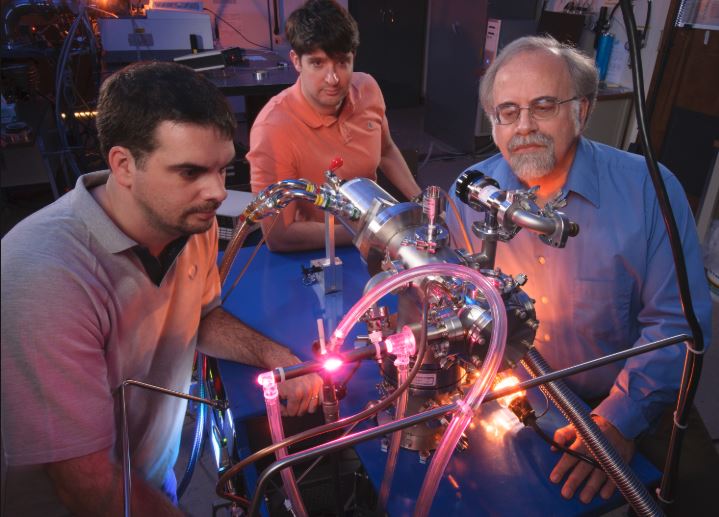
A growing number of organic compounds have been found on meteorites over the years including carbon, hydrogen, oxygen, nitrogen, and sulphur. Despite the actively changing geography of Earth complicating the discovery of remnants from its very early days, scientists have been able to find and study things like carbonaceous chondrites, meteorites originating from asteroids as old as our solar system. This research has made it possible to analyze how planets have formed and evolved over billions of years. Combining this type of research along with other work demonstrating that meteorites in general contain the building blocks of life and travel throughout the galaxies of the universe, the expanding number of exoplanets being found could imply even more significant possibilities.
Exoplanets, i.e., planets that orbit stars other than our own, are being discovered on a regular basis as data from prior and current observatory and telescope missions is reviewed. Over the last 20 years since “planet hunting” really got started, over 3800 exoplanets have been confirmed with around 2900 more awaiting confirmation. By observing the amount of light a distant star dims over period of time, scientists can determine whether there is a planet orbiting it, its size, distance from its star, and the colors missing in the planets’ atmosphere light spectrum which tell what chemicals are present, such as oxygen, carbon dioxide, nitrogen, and so forth. After analyzing all of these things, it can be predicted whether an exoplanet may be Earth-like and whether it’s in what’s called the “Goldilocks Zone”, or position where life as we know it might have the right conditions to evolve.
That may seem like a lot of conditions to meet, but it’s estimated that around 20-50 percent of the stars in our night sky may have small, rocky planets in their stars’ habitable zones. As more is learned about planet formation, that number may be revised up or down. Thus far, one planetary system has been studied extensively that has planets somewhat similar to Earth: TRAPPIST-1. It’s comprised of an ultra-cool dwarf star with 7 rocky worlds orbiting it, all of them potentially having water, some more than Earth. Considering the growing evidence that the seeds for life to evolve are prominently distributed and created throughout space with the number of potentially Earth-like planets being discovered, we may have some exciting news from the interstellar world in the near future.
News
Tesla Robotaxi has already surpassed Waymo in this key metric
Tesla Robotaxi has already overtaken Waymo in Austin in one key metric, but there’s still more work to do.

Tesla Robotaxi has already surpassed Waymo in one extremely important key metric: size of service area.
Tesla just expanded its service area in Austin on Monday morning, pushing the boundaries of its Robotaxi fleet in an interesting fashion with new capabilities to the north. Yes, we know what it looks like:
🚨 Tesla’s new Robotaxi geofence is…
Finish the sentence 🥸 pic.twitter.com/3bjhMqsRm5
— TESLARATI (@Teslarati) July 14, 2025
The expansion doubled Tesla Robotaxi’s potential travel locations, which now include the University of Texas at Austin, a school with over 53,000 students.
The doubling of the service area by Tesla has already made its travel area larger than Waymo’s, which launched driverless rides in October 2024. It became available to the public in March 2025.
According to Grok, the AI agent on X, Tesla Robotaxi’s current service area spans 42 square miles, which is five square miles larger than Waymo’s service area of 37 square miles.
Tesla Robotaxi (red) vs. Waymo geofence in Austin.
Much can be said about the shape… but the Robotaxi area is now ~3.9 mi² (10 km²) larger than Waymo’s!! pic.twitter.com/dVfh2ODxJC
— Robin (@xdNiBoR) July 14, 2025
The service area is one of the most important metrics in determining how much progress a self-driving ride-hailing service is making. Safety is the priority of any company operating a ride-hailing network, especially ones that are making it a point to use autonomy to deploy it.
However, these companies are essentially racing for a larger piece of the city or cities they are in. Waymo has expanded to several different regions around the United States, including Arizona and Los Angeles.
Tesla is attempting to do the same in the coming months as it has already filed paperwork in both California and Arizona to deploy its Robotaxi fleet in states across the U.S.
As the platform continues to show more prowess and accuracy in its operation, Tesla will begin to expand to new areas, eventually aiming for a global rollout of its self-driving service.
News
Tesla Megapacks arrive for massive battery replacing coal plant
Tesla Megapacks have started arriving on-site to the Stanwell Battery Project, just as Queensland prepares to wind down the Stanwell coal plant.

The first of over 300 Tesla Megapacks have arrived to the site of a massive battery energy storage system (BESS) being built in Australia, dubbed the Stanwell Battery Project after a coal plant it’s set to replace.
In a press release last week, the Stanwell Battery Project announced that the first Tesla Megapack 2XL units had arrived to the site, which is located outside of Rockhampton in Queensland, Australia. The project will eventually feature 324 Megapack units, set to arrive in the coming months, in order to support the 300MW/1,200MWh battery project.
“The Stanwell Battery is part of the diversification of our portfolio, to include cleaner and more flexible energy solutions,” said Angie Zahra, Stanwell Central Generation General Manager. “It is just one part of the 800 MW of battery energy storage capacity we have in our pipeline.
“Capable of discharging 300 MW of energy for up to four hours (1,200 MWh), our mega battery will be one of the largest in Queensland.”
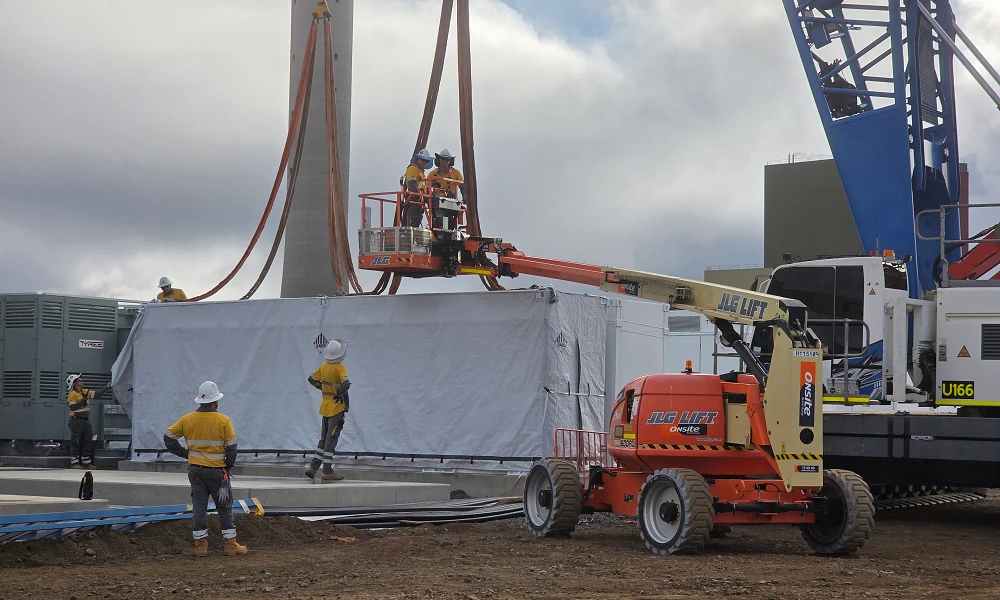
Credit: Stanwell
Did you know Tesla’s Lathrop facility churns out a Megapack every 68 minutes? That’s enough energy to power 3,600 homes for an hour per unit! ⚡️ pic.twitter.com/bG6fpHkB9O
— TESLARATI (@Teslarati) June 11, 2025
READ MORE ON TESLA MEGAPACKS: Tesla Lathrop Megafactory celebrates massive Megapack battery milestone
The state is working with government-owned company Yurika to facilitate construction, and the process is expected to create roughly 80 jobs. The project is expected to come fully online in May 2027, with initial commissioning of the Megapacks aiming for November 2025.
The Stanwell Battery is set to replace the nearby Stanwell coal generation plant, which the government is planning to wind down starting in 2026 as part of efforts to reach an 80 percent renewable energy generation ratio by 2035. Meanwhile, the government is also set to begin winding down the Tarong and Callide coal plants, while several other Megapack projects are being built or coming online. o ya
Tesla currently has two Megapack production facilities, located in Lathrop, California, in the U.S. and another that came online earlier this year in Shanghai, China. The Shanghai Megafactory shipped its first units to Australia in March, while both factories are expected to be capable of producing 10,000 Megapack units per year upon reaching volume production.
News
The Tesla Diner is basically finished—here’s what it looks like
The company first broke ground on the Diner, Drive-in, and Supercharger location in September 2023. Now, it has served one of its first internal customers.

Tesla has finally completed the construction of its highly anticipated Diner, Drive-in, and Supercharger in Los Angeles, and recent photos of the interior’s “retro-futuristic” style are making their way around the internet.
X user Brad Goldberg shared photos from the Tesla Diner site last Tuesday, depicting some of the Supercharger stalls, indoor and outdoor seating areas, multiple neon lights, and even an Optimus robot. Goldberg also noted that there had been a “flurry of activity on site” while he was snapping the photos last week, suggesting that the restaurant location could be getting close to opening.
The Tesla Diner also served one of its first internal customers in the past few days, as Elon Musk posted on X on early Monday morning that he had just finished up eating a meal at the site:
I just had dinner at the retro-futuristic Tesla diner and Supercharger.
Team did great work making it one of the coolest spots in LA!
The photos also show that the site is pretty much done, with some of them even showing vehicles charging at the charging stalls.
You can see some of the latest photos of the Tesla Diner below.

Credit: BradGoldbergMD | X
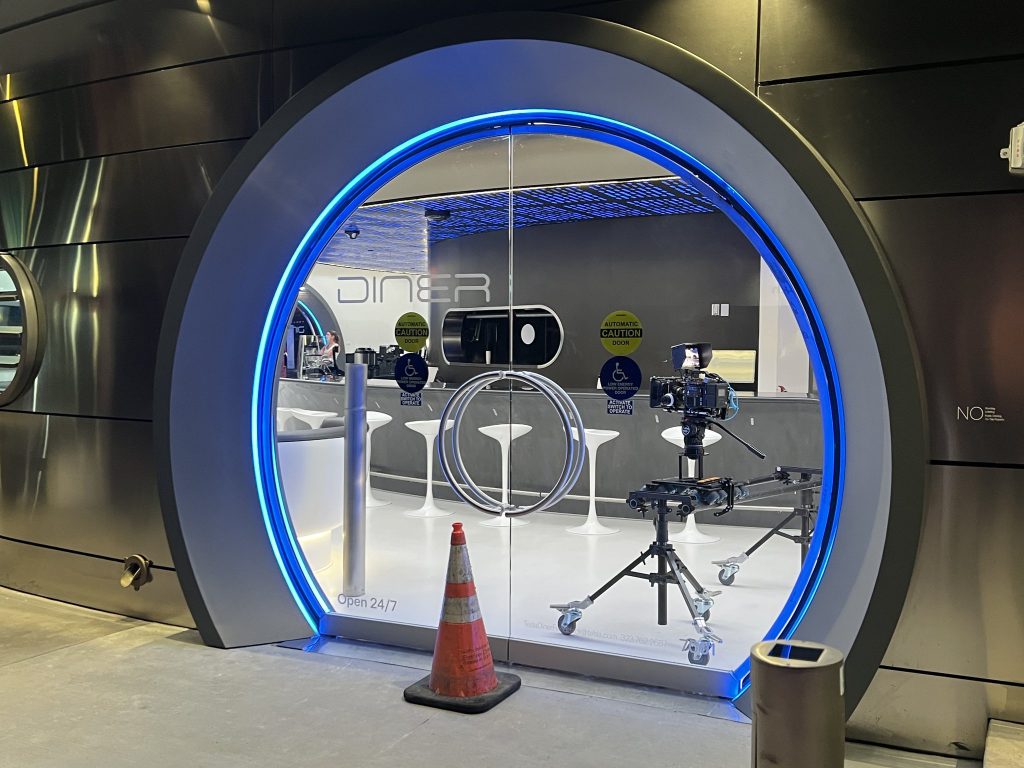
Credit: BradGoldbergMD | X

Credit: BradGoldbergMD | X
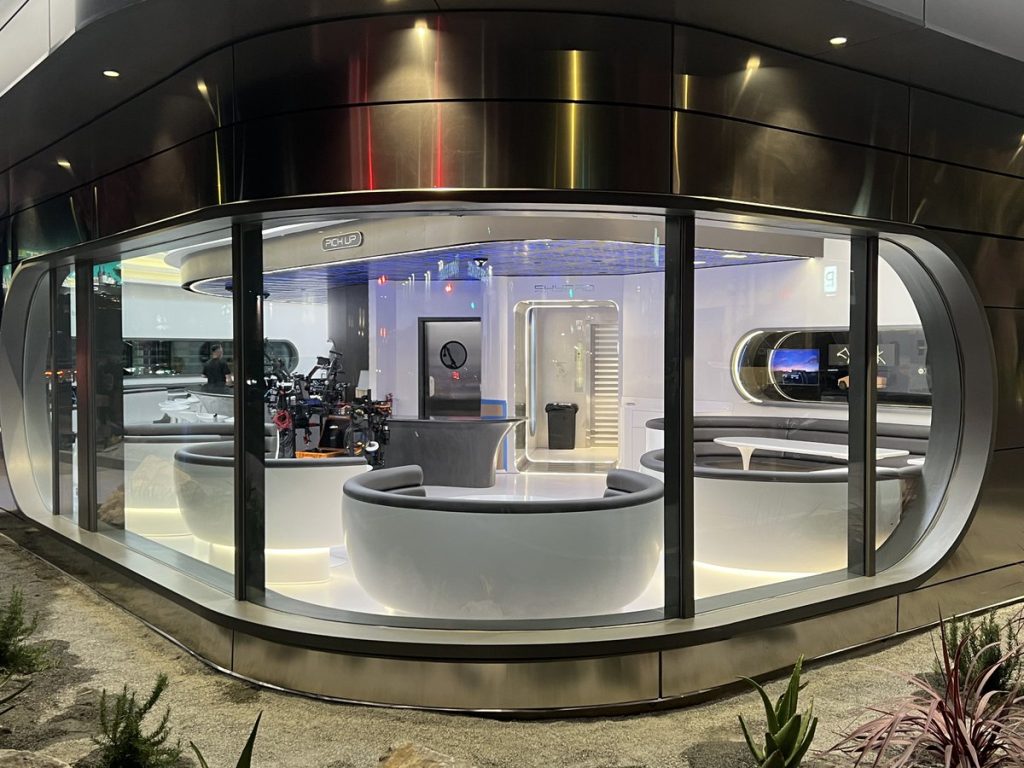
Credit: BradGoldbergMD | X
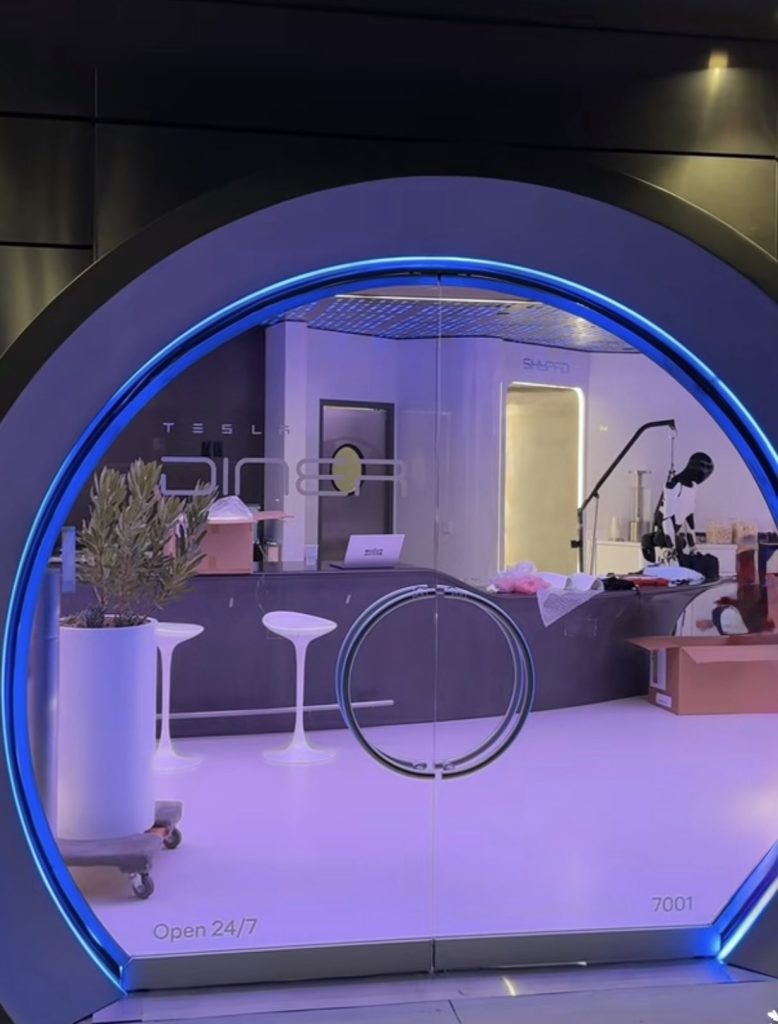
Credit: TeslaKing420 | X
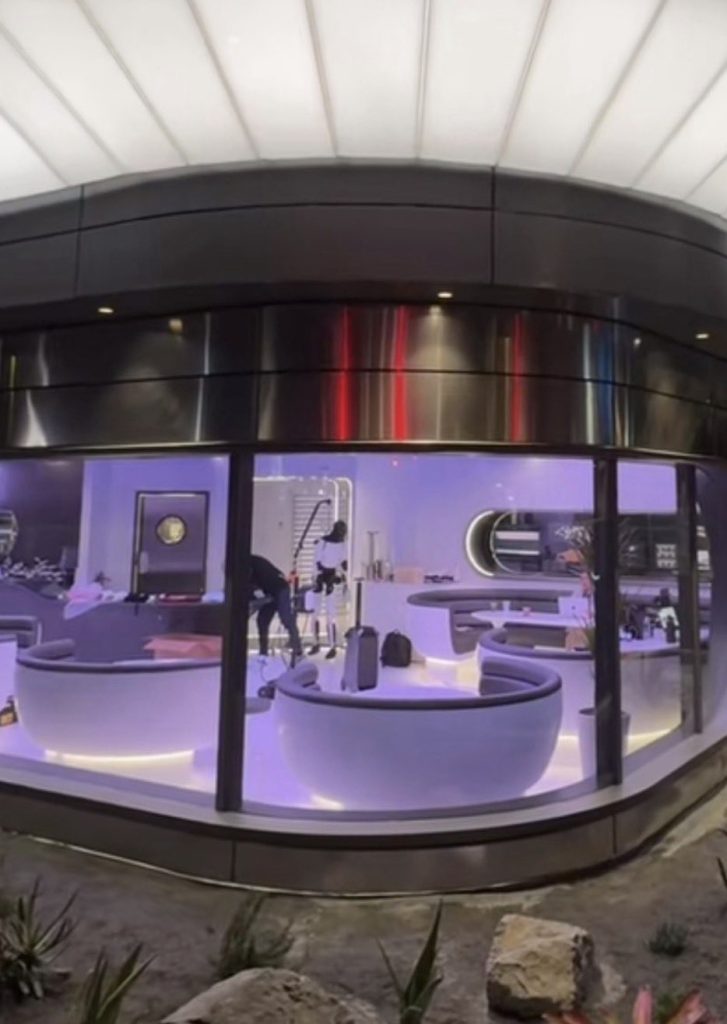
Credit: TeslaKing420 | X
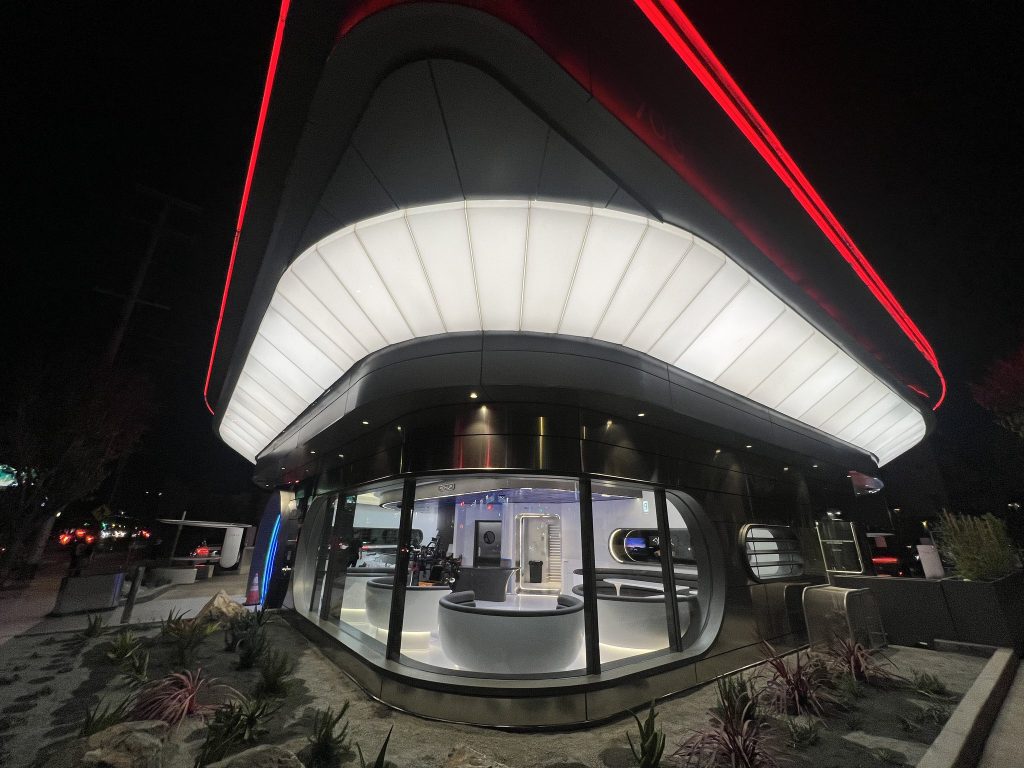
Credit: Brad Goldberg (via Sawyer Merritt on X)
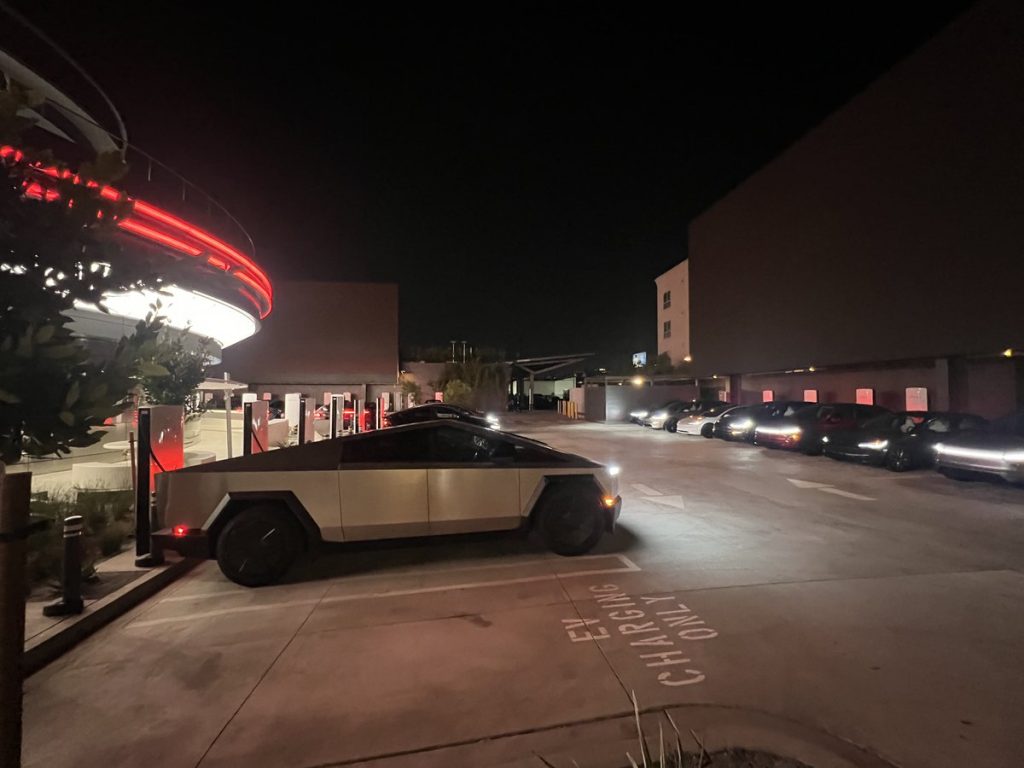
Credit: Brad Goldberg (via Sawyer Merritt on X)

Credit: Brad Goldberg (via Sawyer Merritt on X)
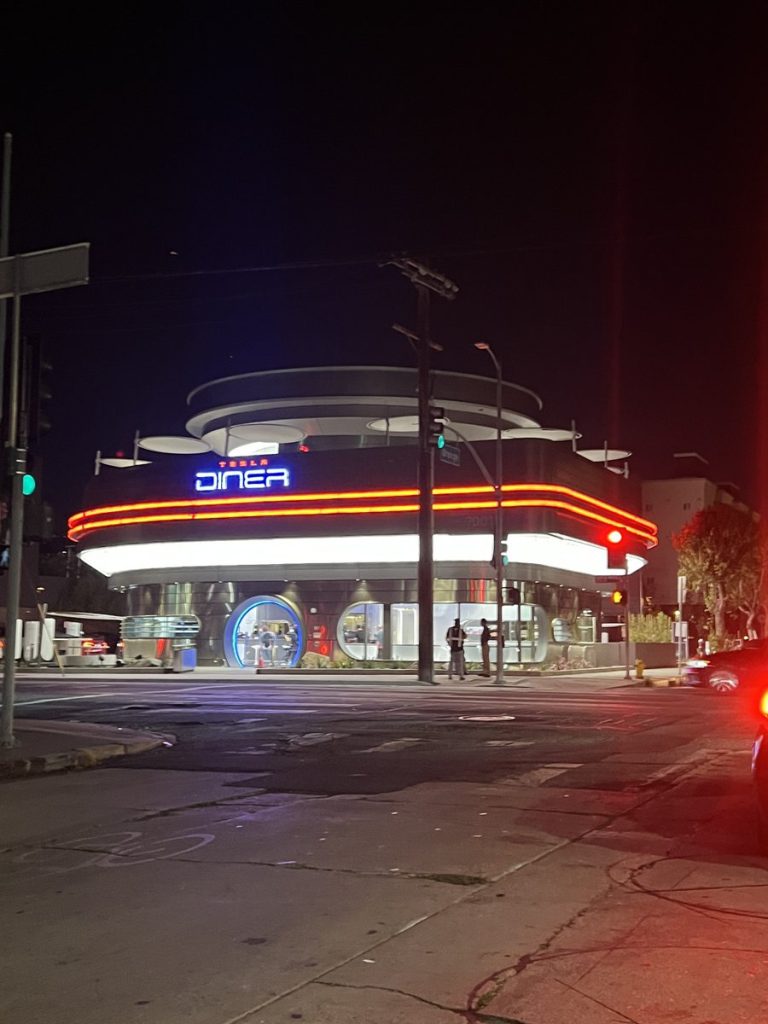
Credit: Brad Goldberg (via Sawyer Merritt on X)
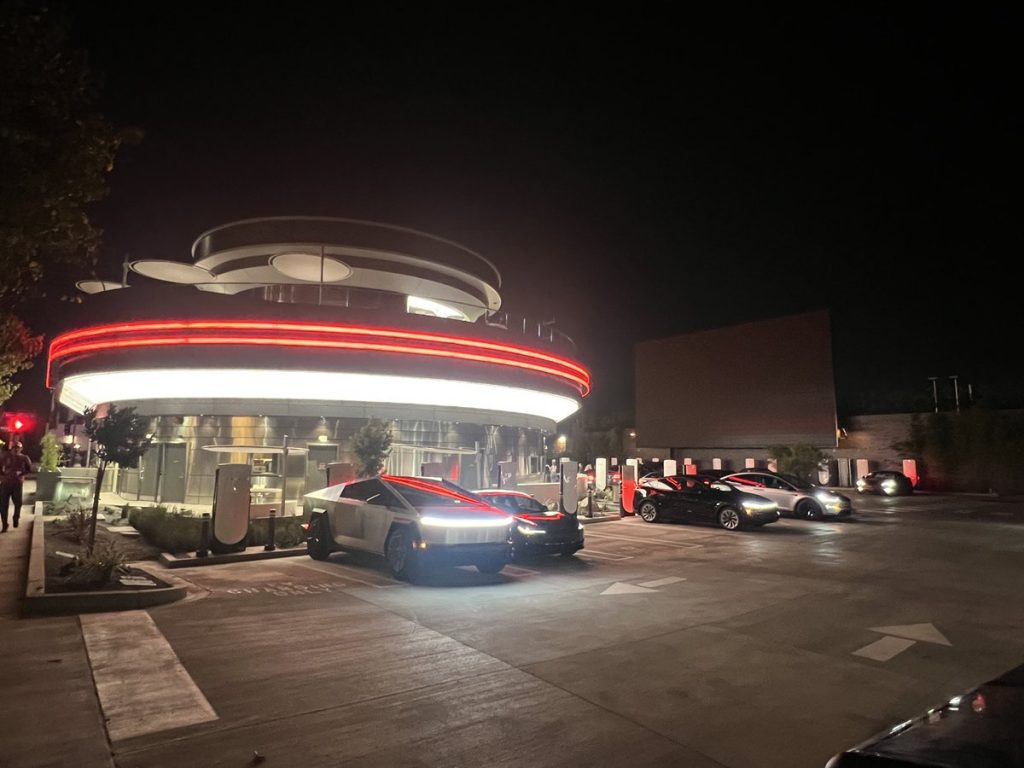
Credit: Brad Goldberg (via Sawyer Merritt on X)
READ MORE ON TESLA’S LA DINER: Tesla readies Drive-In Diner Supercharger for launch with app inclusion
When will the Tesla Diner open to external customers?
While it’s still not open to external customers yet, the news again suggests that the company could be close to an official opening date. Tesla first broke ground on the Diner in September 2023, after receiving a wave of building permit approvals throughout that year. Teslarati also covered much of the construction progress throughout last year, including when crews installed the first and second drive-in screens.
Located at 7001 West Santa Monica Boulevard, the idea was first discussed in 2018 by Musk and a few others on Twitter, featuring 1950s rock and roll, waiters on roller skates, and drive-in movie theater screens playing clips from some of history’s best movies. Notably, the photos of the front doors also show that the site will be open 24 hours a day, 7 days a week, whenever it does end up opening.
Tesla’s progress on Supercharger with diner, drive-in seen in aerial footage
-

 Elon Musk2 weeks ago
Elon Musk2 weeks agoTesla investors will be shocked by Jim Cramer’s latest assessment
-

 News2 days ago
News2 days agoTesla debuts hands-free Grok AI with update 2025.26: What you need to know
-

 Elon Musk4 days ago
Elon Musk4 days agoxAI launches Grok 4 with new $300/month SuperGrok Heavy subscription
-

 Elon Musk6 days ago
Elon Musk6 days agoElon Musk confirms Grok 4 launch on July 9 with livestream event
-

 News1 week ago
News1 week agoTesla Model 3 ranks as the safest new car in Europe for 2025, per Euro NCAP tests
-

 Elon Musk2 weeks ago
Elon Musk2 weeks agoxAI’s Memphis data center receives air permit despite community criticism
-

 News4 days ago
News4 days agoTesla begins Robotaxi certification push in Arizona: report
-

 Elon Musk2 weeks ago
Elon Musk2 weeks agoTesla scrambles after Musk sidekick exit, CEO takes over sales




